Interview with Yosel Tiefenbrun
1September 1, 2013 by Ville Raivio
VR: Your age and occupation?
Products from Pukimo Raivio
Ralph Lauren, Black Label suit, size 52EU
YT: I am 24 years old and a Religious Orthodox Rabbi and apprentice Tailor at Maurice Sedwell, Savile Row.
VR: Your educational background?
YT: I was born in Brooklyn and raised in London, I went to private Jewish schools till the age of 16 when I left home to study in Brunoy, a lovely, quiet city in the south-eastern suburbs of Paris, where I continued my studies for a year. One year was enough for me, it was a little too quiet so I moved on to study in Israel for 2 years and then to Brooklyn, New York, back to where it all started for my final year of what we call Yeshiva. From there I went to volunteer work for the Jewish community in Singapore for 2 years. I met many people from many walks of life from whom I learned a tremendous amount. My work included Organizing festival events, teens and student activity, giving classes, Koshering hotel kitchens for community functions and much, much more. Over the 2 years I continued my rabbinical studies and was ordained as a Rabbi along with my peers. Singapore for me is home away from home; I admire the fascinating people and cherish the years I spent there.
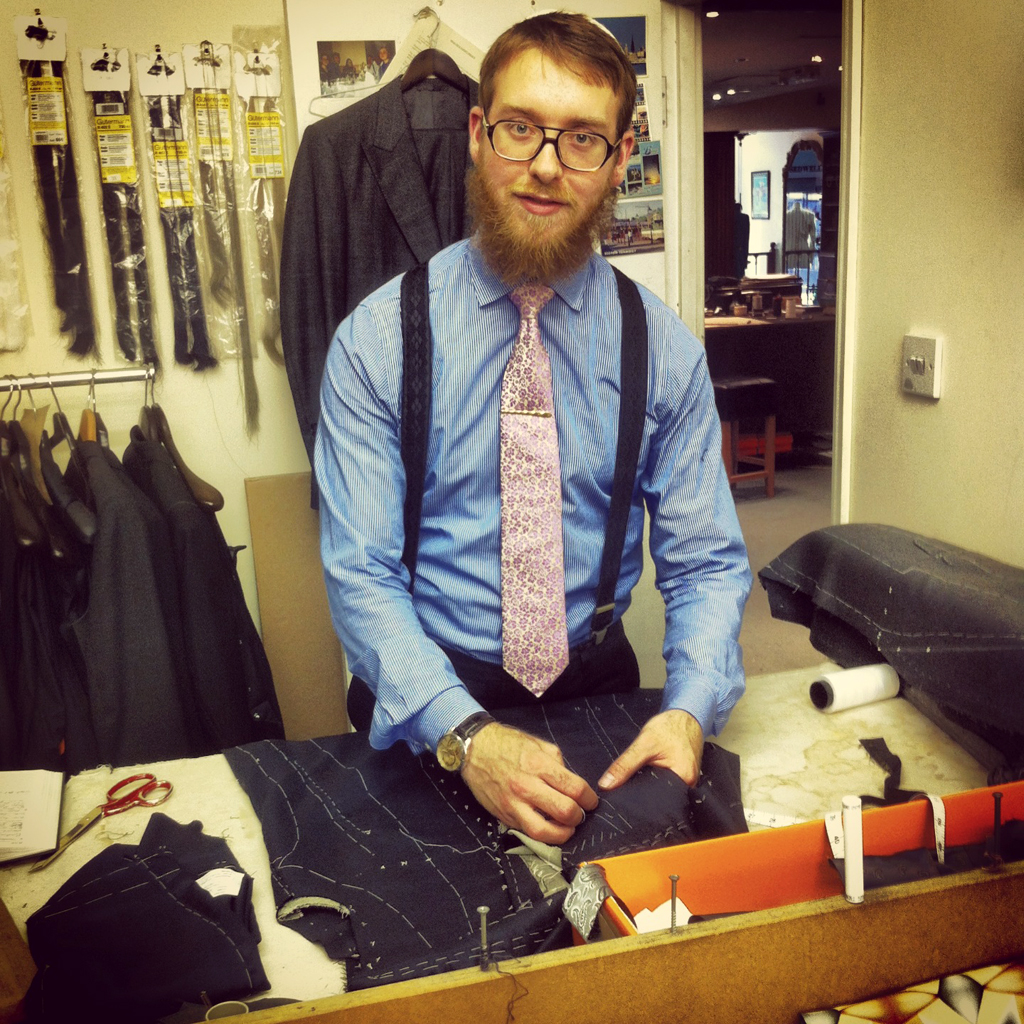 At the Maurice Sedwell premises
At the Maurice Sedwell premises
VR: Have you any children or spouse (and how do they relate to your style enthusiasm)?
YT: I am single.
VR: …and your parents and siblings’ reactions back when you were younger?
YT: I am the oldest of a very talented artistic family. As a child I was always very particular with what I wore, growing up in a religious home we would obviously go to synagogue every Saturday and all the holidays. It’s very important when we pray to the master of the universe to dress as though we are standing in front of a king, not just a king but the king of all kings. Therefore dressing well and looking your best was always encouraged and should always be that way.
VR: What other hobbies or passions do you have besides apparel?
YT: I like drawing and photography but they both come to me at certain times, I can’t decide whether tomorrow I’m drawing or taking pictures. I love traveling, I like to see the way other people live and get inspired. I spent a little while in Bali; I will never forget the smile on the faces of one family, a mother and 4 children, all on one motorbike, it was obvious they didn’t have much but at the same time they had everything. I like a good game of tennis, too.
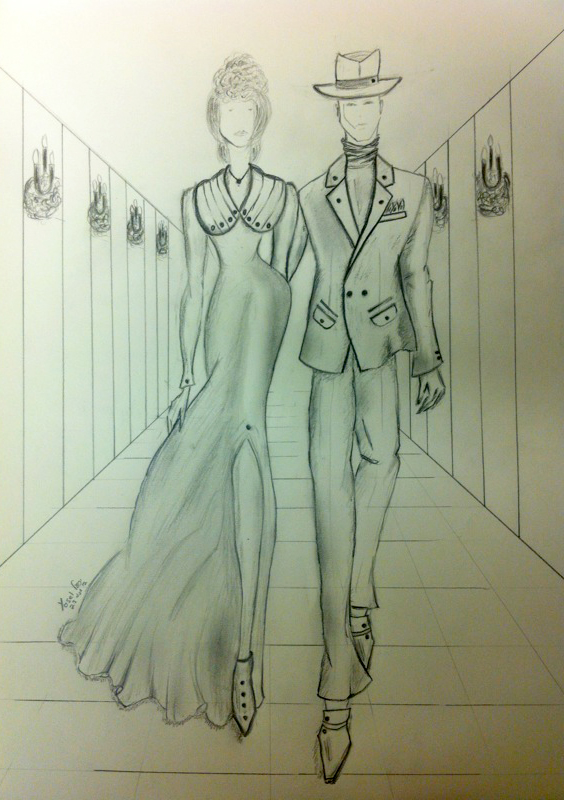 Illustration from pre-academy days
Illustration from pre-academy days
VR: How did you first become interested in clothing, and when did you turn your eyes to more or less tailored pieces? Why classics instead of fashion?
YT: While in Singapore I took night classes at Nanyang Academy of Fine Arts, studying interior design. I always wanted to design and create my own clothes and eventually have my own company from very young, but I never knew how. Being religious would mean going to synagogue every (Shabbat) Saturday, my mother would buy me suits from the age of 6 – 7 but I think I really started being a little fussy from 11 years old on. I loved my suits and I would try to convince my mother to get me a new one twice a year; one for the high holidays and then one in April for Passover. I was very careful and always took great care of them; in fact I’m sure that if I went digging, I would find them still in good condition. I remember that I would never dare play in my suit, in fact I would change when I came home so it wouldn’t get dirty or overly used. I Remember I was a perfectionist with whatever I wore and how it was kept up.
Being religious, the fashion world is not a industry one is encouraged to pursue, so I thought that perhaps interior design would be good for me since I always liked interior design and furniture. I applied to NAFA Singapore, I had a great time, learned a lot about prospective drawing, technical drawing, layout planning, etc. I also had a module on Furniture design which was my favourite. We had to design a rocking chair out of wood. Using all the machines was pretty scary but the hand work, the carving really stayed with me, I appreciated it very much. Unlike most others, I created something so different that I still plan to bring it out in the future. I realized I was bringing fashion into my drawings on interior projects, so after I finished I decided to apply for some basic modules on fashion illustration and from there my aspiration grew. I would go to some of the shows, particularly Raoul, went to exhibitions, including a beautiful one by Valentino, a designer I admire very much. Over the summer of 2011, my last few months in Singapore, I had the opportunity to intern at Harpers Bazaar for the editor Giselle Go, now Editor in Chief of Style Magazine Singapore. I worked on the men’s shoots and the menswear report for the magazine amongst other jobs. I always liked the quality and beautiful artwork in high-end clothing, in women’s wear I appreciate couture more. I have always been into classics. When I returned to London, I chose to go to Savile Row over fashion schools to peruse my career. I wanted to learn the craft from ground up and from there my passion for men’s tailoring grew and grows every day.
VR: How have you gathered your knowledge of apparel and tailoring — from books, in-house training, workshops or somewhere else?
YT: My knowledge of tailoring came from books and mostly from in house training. I used to open pattern books but close them after getting lost straight away. Only after I learned pattern cutting at the Savile Row Academy, I now understand what’s going on. I think when it comes to a craft like tailoring, it takes years of in house training. Besides the actual stitching, you get to feel all the different types of cloth. When you do alterations, you see the different ways of making too.
VR: How would you describe your own dress? Have you any particular style or cut philosophy?
YT: My style is classic and elegant with my own personal edge, I like to push boundaries with my own creativity wether it’s with colour or a cut. For me, it’s about confidence and expressing one’s image. I change my looks, always creating new combinations for whatever I think works at the time.
VR: Apart from the pieces you’ve made for yourself, which RTW makers or tailors do you favour?
YT: Recently I have been going to vintage stores; I really prefer it since it’s not a collection from a designer as in a regular store, it’s a collection of designers, tailors, people with their own imagination which might be really interesting. I enjoy finding something special amongst the rest; you walk out feeling like you made a real find. My wardrobe contains a real mix, like an interesting tweed suit from Jil Sander, Calvin Klein, a few from Ted Baker, some other brands and many vintage pieces. As my wardrobe grows from clothes I am making, I find myself buying cloth rather than shopping for clothes.
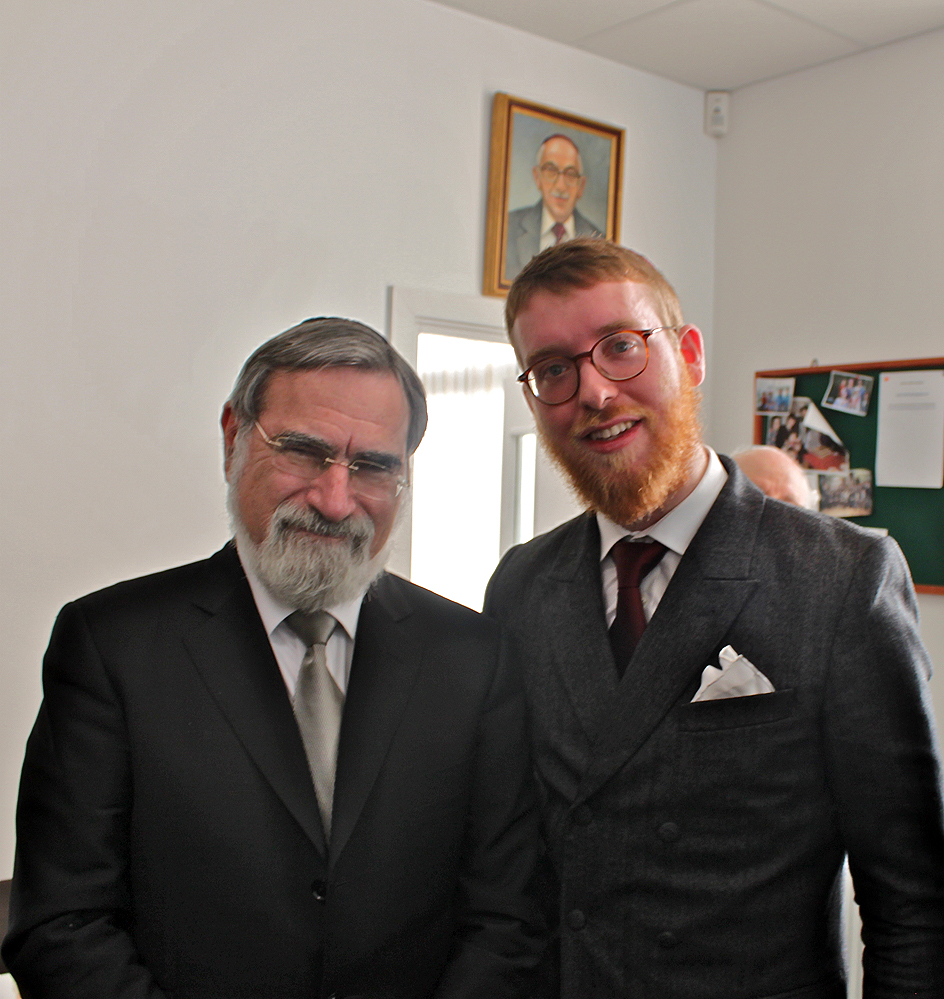 With Jonathan Sacks, Chief Rabbi of the United Hebrew Congregations of
With Jonathan Sacks, Chief Rabbi of the United Hebrew Congregations of
the Commonwealth
VR: How did you end up apprenticing at Maurice Sedwell? Should my readers expect The House of Tiefenbrun one day?
YT: I first stopped by Maurice Sedwell when I returned from Singapore in the end of 2011 and went to all the different houses on Savile Row, asking if they took apprentices and how to go forward with my passion for tailoring. I applied to Newham College as there wasn’t a fee. I figured this will give me a great opening and that I’ll be there for the next 3 years, but as the first course came near to its end I figured that if I want to have the best skills and get into the industry quicker, I should apply to the Savile Row Academy, which I did. I got accepted by Andrew Ramroop, the Professor at the Academy and Head Tailor at Maurice Sedwell. I was wondering how I would pay, when a friend asked if I would join him to work in a winery in upstate NY, which would make a good amount of money. I took the job, causing me to join the academy late, but I was able to catch up and after 3 – 4 weeks I was called in and asked if I wanted to work as an apprentice at front shop — and of course I said yes.
VR: There are dozens of tailors in London alone — why should my readers try Sedwell?
YT: What’s beautiful about walking in to Maurice Sedwell is that one is greeted by a tailor who understands the making of a suit, the cutting and fitting, not a salesman who is trying to push a sale. We focus on personal style, allowing the customer to be creative and innovative while obtaining the most traditionally made suit. This means that we don’t cut any corners in the making as many do today on the Row, everything’s fully Handmade Bespoke to the highest standard, all made on premises by the most skilled tailors with the guidance and direction of Master Tailor Andrew Ramroop.
VR: I’ve developed an interest to Judaism over the past year as the accomplishments of your people are, frankly, awe-inspiring. I’ve also taken a look at the many garments, hats and clothes worn by different movements around the world. Dress codes are particular in many settings. Would you say that the average Jewish man is very aware of appearances and the language of clothes? Where would one find the most classically tailored Jewish men?
YT: The Jewish men, especially in the religious Hassidic communities, have particular dress codes, some wear Borsalinos and long coats on the Sabbath, some wear fur hats with beautiful patterned coats, mostly black, but a lot of fine details and different cuts. Within one ultra-religious community you can find many different sects that will dress differently, depending on their origin from either Europe, Russia or even the Sephardic from Spain and Middle East. Judaism has always encouraged wearing beautiful clothing. In fact, clothes represent honor and beauty as one of our great masters in the Talmud (Shabbat, 113a), Rabbi Jochanan, called his clothes ‘my honorers’ (as per the verse in Exodus 28:2: ‘you shall make holy garments for your brother Aaron, for honor and beauty.’) One should treat his clothes with great respect as another great master in the Talmud, (Berachot 62b) Rabbi Yossi, the son of Rabbi Chanina, said: ‘Whoever debases clothing, in the end will not derive benefit from them.’ Because David cut off the corner of Saul’s garment (see I Samual, ch. 24), therefore it came to pass that when ‘King David grew old, and came along in days; they covered him with clothes, but he was not warmed.’ (I Kings 1:1). As for the most stylish Jewish men, it’s difficult to say but I would think they’re either in Brooklyn, NY, or London.
VR: What’s your definition of style?
YT: Style is the way you represent yourself. It’s important to find your comfortable area of clothing; if you are more of the casual type, work within your zone and express your individuality rather than copying someone else’s complete look from a magazine. Your clothing should flow in harmony with your body, it should enhance your image.
VR: Who or what inspires you?
YT: I take inspiration from the great people in my life I have met over so far. My grandfather, who is a mentor to me, great designers as well as beautiful destinations. Perhaps the core inspiration for me in my life is the great leader Rabbi Menachem Mendel Schneerson, who inspired many to live a modest life staying strong to our values, loving mankind. Being a ‘Mentch,’ an elegant person all around.
VR: Over the years you must have learned quite a bit about style. Is there something you wish more men would know? This is a great opportunity to make a lasting influence on my younger readers. Most of us aren’t blessed with rakish relatives, which makes learning about style a challenge later in life and yet another trait men are supposed to master. All tips and thoughts are valuable.
YT: Many people tell me ‘That’s a great look, but I would never be able to pull that off.’ My answer to them is; yes, it looks great on him but that’s because of many reasons. Look deeper, why is it that it looks so great on him — is it the cut of the jacket? The style of the pockets or the colour theme, the accessories? Get inspiration from people in real life rather then just magazines. These people can be your friends or strangers on the street, on the train, at the café, and see why it looks so great on them. It’s written in the chapters of our fathers, ‘Who is wise? One who learns from all people.’ I recommend being open to being inspired and letting it have an affect on you for the positive.
https://twitter.com/RabbiTailor/
Pictures: © Yosel Tiefenbrun, David Nyanzi
Category Interviews, Men of style, Savile Row, Tailors | Tags:

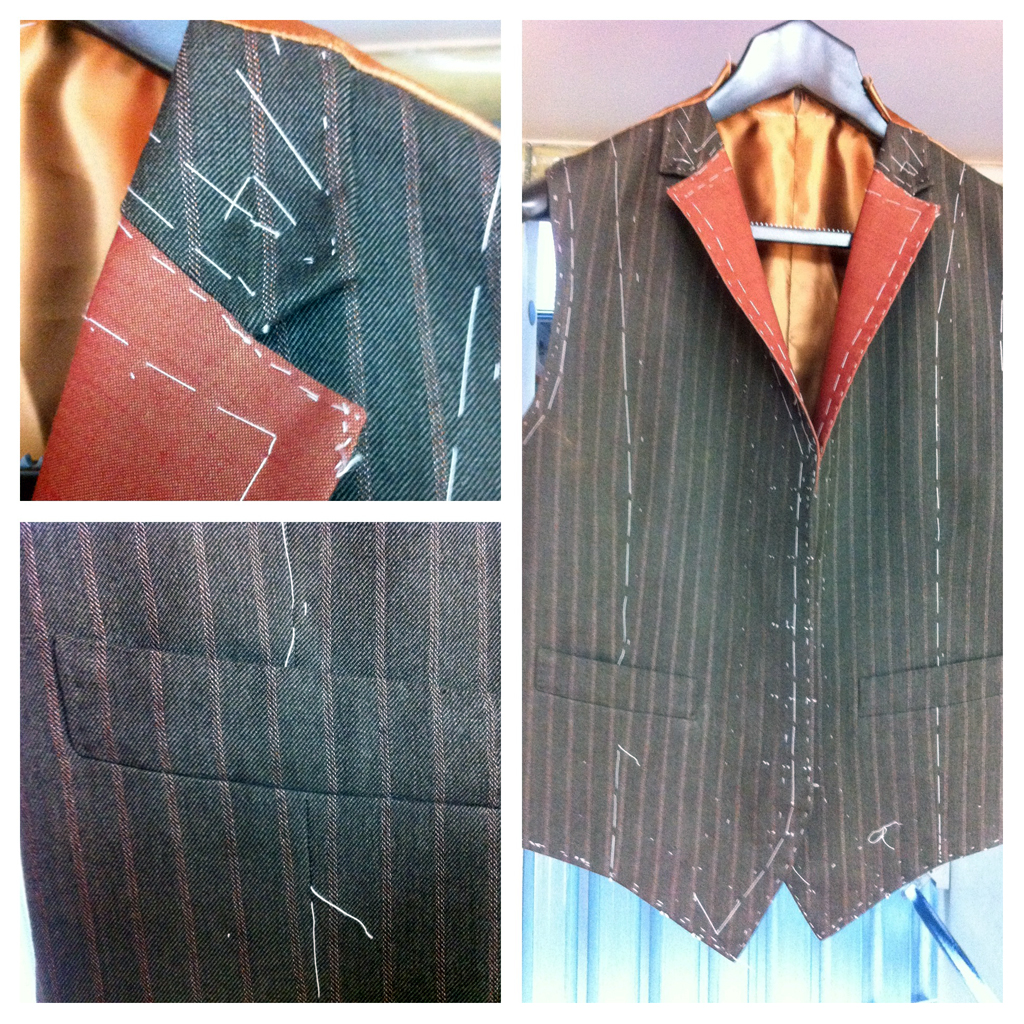
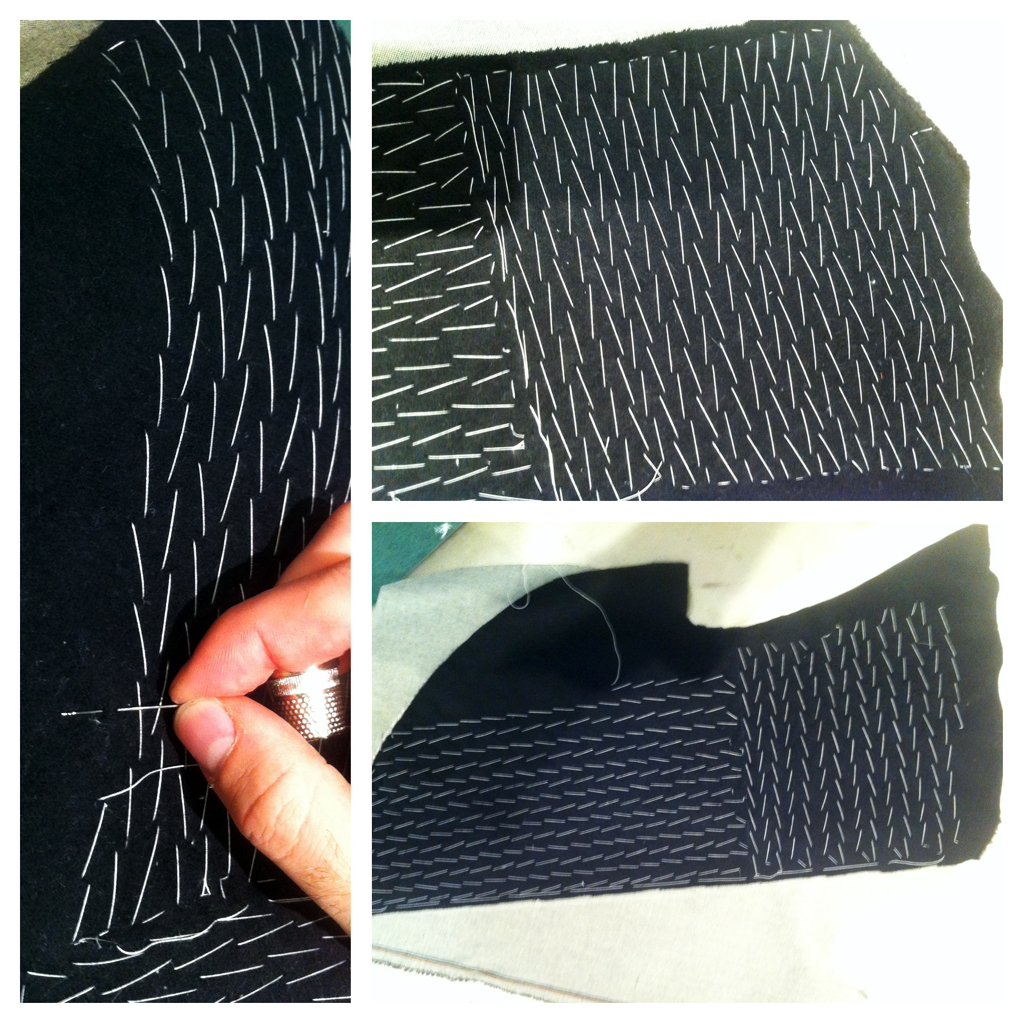
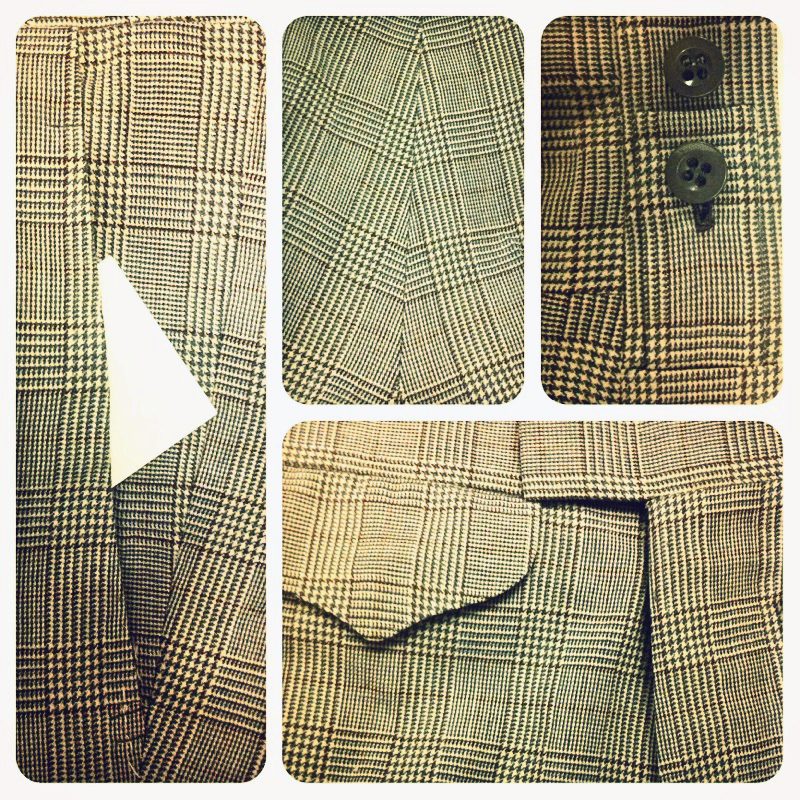
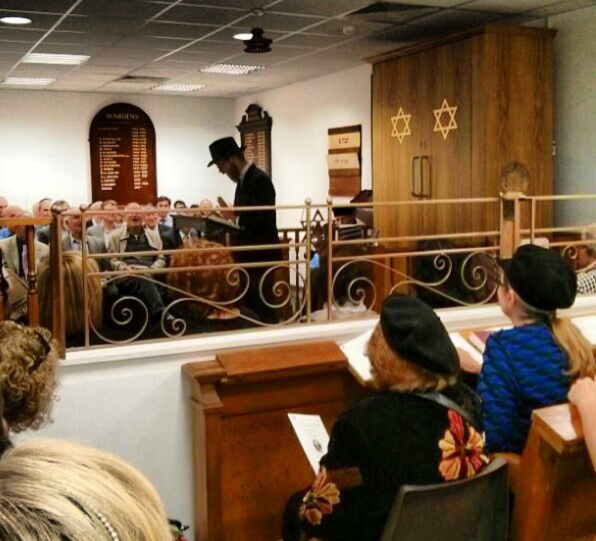
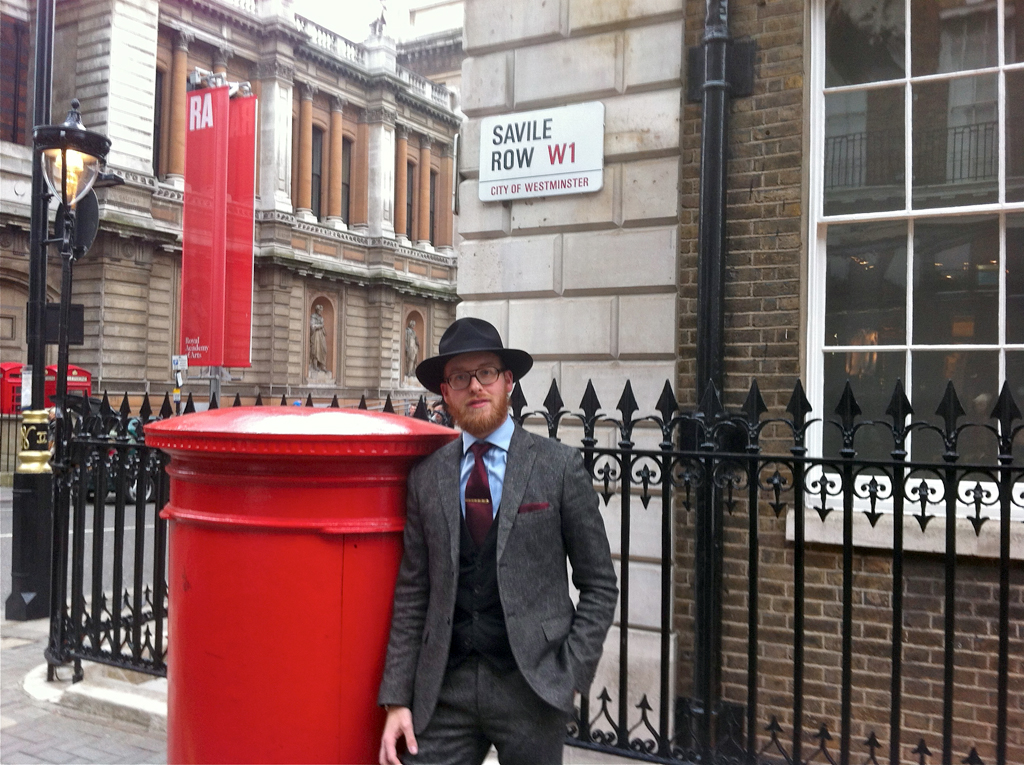
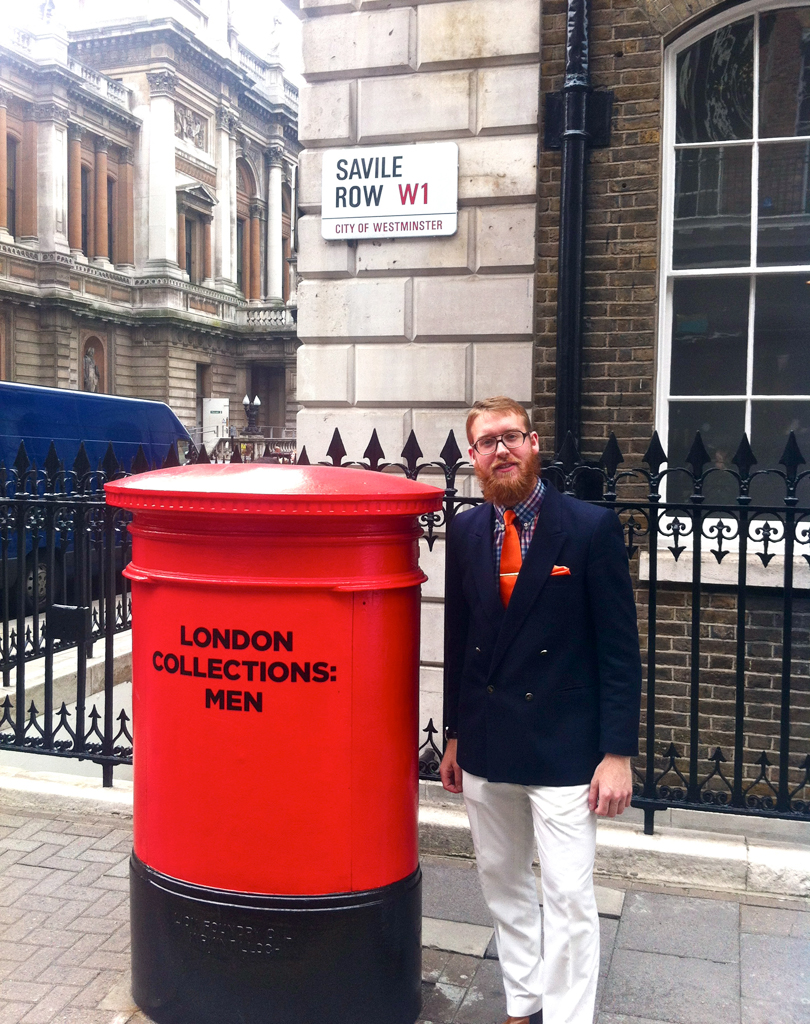
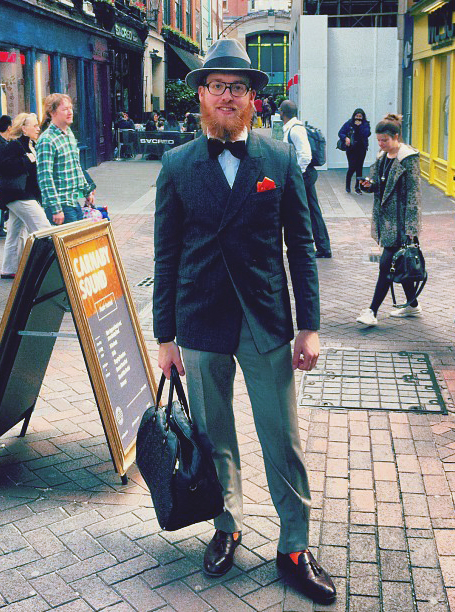
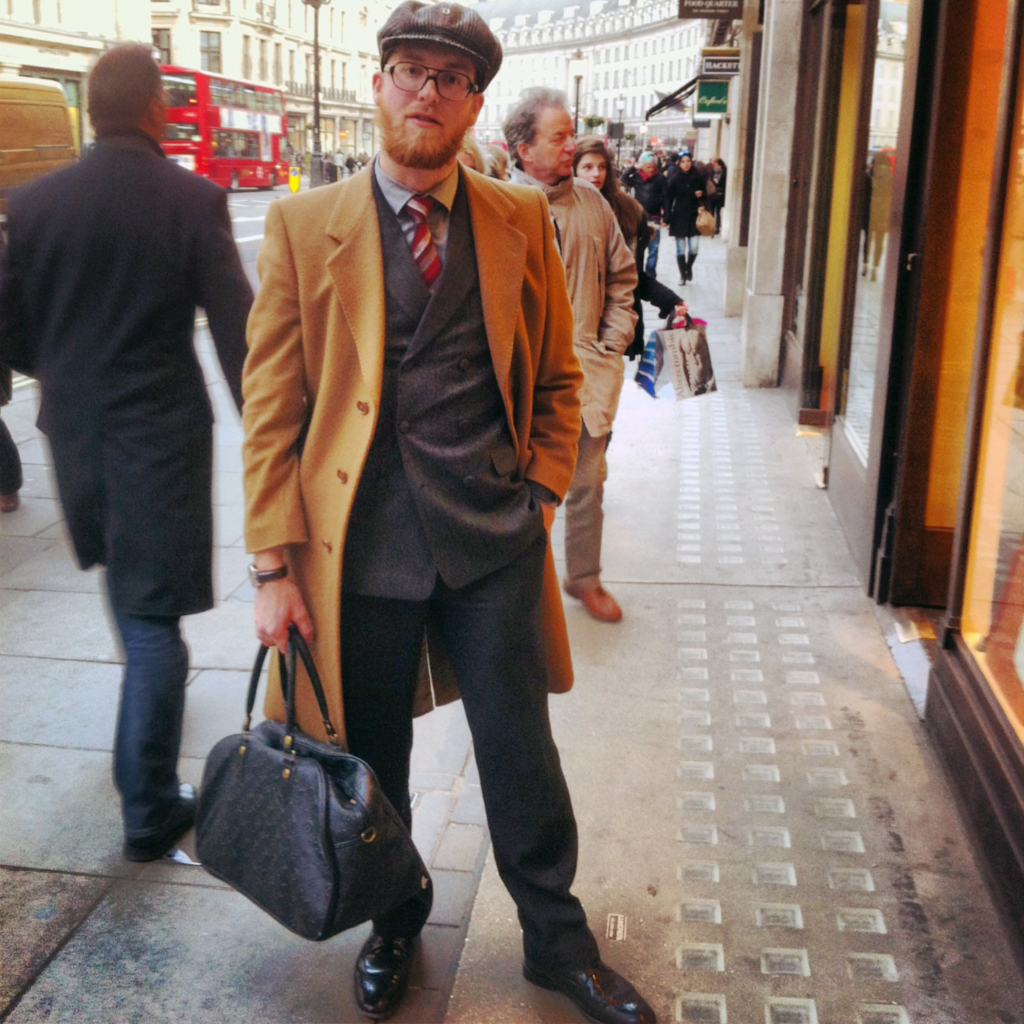
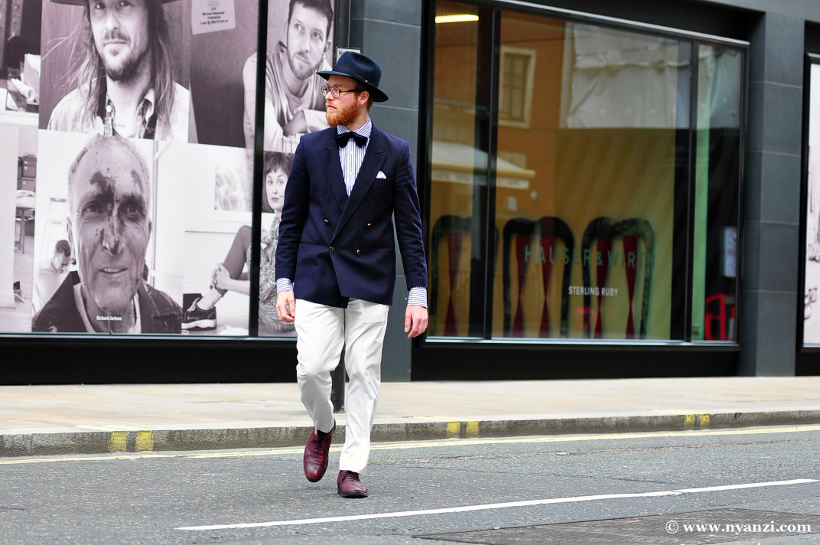


Good Stuff Yosel!